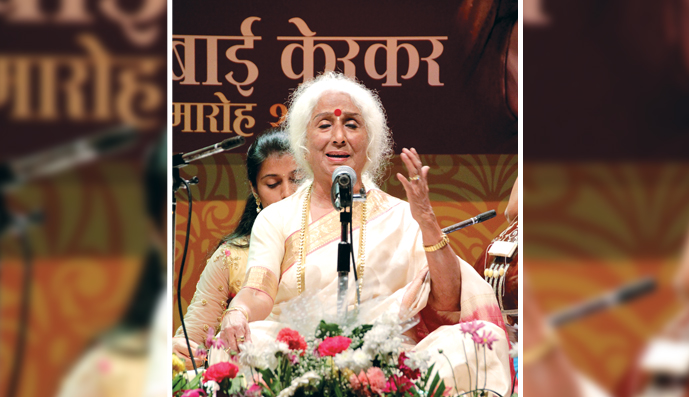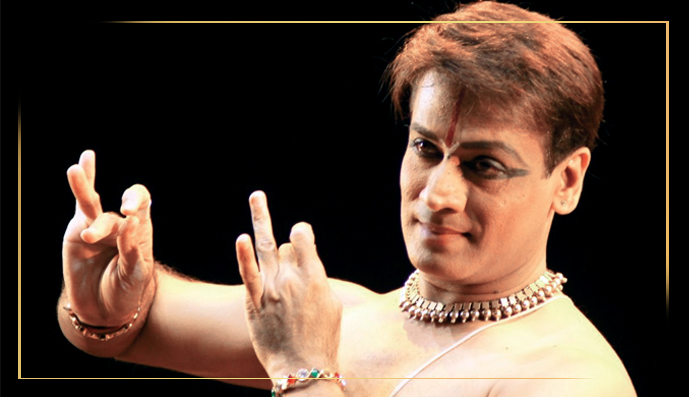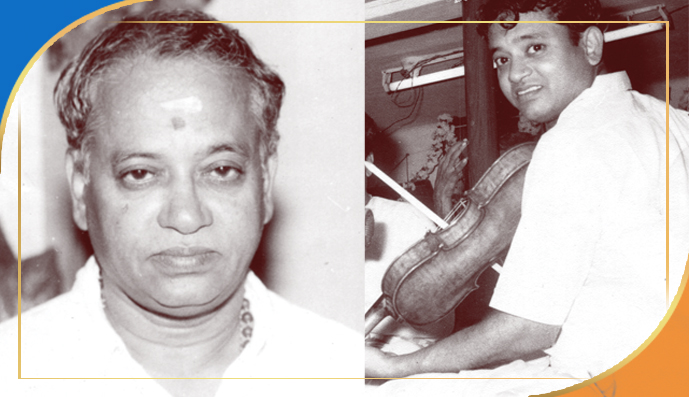Born on 13 September 1932, doyen of the Kirana gharana, “Swarayoginee” Prabha Atre cuts a dignified figure. Known for her erudition and novel approach to her music, the Padma Bhushan awardee is soft-spoken and gentle. An author, teacher, scholar—she wears many hats with élan. Recipient of several accolades – Padma Shri in 1990, the Central Sangeet Natak Akademi Award in 1991, Padma Bhushan in 2010, and the Central Sangeet Natak Akademi’s Tagore Fellowship in 2011 being the most prominent, vidushi Prabha Atre has been a trailblazer in many ways. Representing the Kirana gharana at a time when the more ebullient style of Bhimsen Joshi of the gharana had caught the public’s imagination, Prabha Atre chose to swim against the popular tide of perception of her gharana.
Sathyanarayana Raju is one of the most sought-after Bharatanatyam dancers and choreographers. Sathya, as he is fondly known amongst his peers, has made his mark in classical dance by dint of sheer hard work, dedication and practise. His dance is an amalgamation of the intrinsic elements of Bharatanatyam performed with fluidity. Based in Bengaluru, he was trained by Sangeet Natak Akademi awardee guru Narmada of Shakuntala Nrityalaya and guru Subhadra Prabhu in the Pandanallur style of Bharatanatyam. He received training in Kathak from gurus Maya Rao and Chitra Venugopal. Sathya is an ‘A’ Top grade artist of Doordarshan who has presented several performances for its ‘National programme’. He was featured in the national integration song, Mile sur mera tumhara along with Bhimsen Joshi and many other top artists. He has performed all over India and has received much acclaim in the UK, USA, Canada, Switzerland, France, Maldives and Singapore. Sathya diligently essays his multi-faceted roles of dancer, teacher, choreographer and organiser. He has been training several students at his institute “Samskruthi - The Temple of Art”. Sathya has gone from one performance to the next, one moment to the next with much gratitude for his journey. He has choreographed several landmark repertoire pieces and productions.
Veteran violinist Sikkil R. Bhaskaran passed away on 20 July 2021. Dedicated exclusively to accompaniment, the artists he shared the stage with straddle generations and read like a who’s who of Carnatic music—from Maharajapuram Viswanatha Iyer, K.B. Sundarambal and M.M. Dandapani Desigar to Sikkil Mala Chandrasekhar, N. Vijay Siva and Palghat Ramprasad. He is known, along with his contemporary, Tanjavur Upendran, for bringing to light numerous rising talents, Mandolin U. Shrinivas being particularly noteworthy, and encouraging other stalwarts to play for these youngsters. Bhaskaran had the distinction of having played for as many as three successive generations of multiple musical families and several august lineages. Bhaskaran was born on 4 May 1936 in the town of Sikkil (located between Tiruvarur and Nagapattinam) to Rajagopalan and Vedavalli, in an Isai Vellalar Pillai family, a community involved in music for generations. Bhaskaran lost his father, a military man, at around age four.
Vedic yagas incorporated dance too. During Asvamedha yaga, the story of Vishnu’s Trivikrama avatara was danced. Given the hoary tradition of dance being a part of worship, it was no surprise that Tirumangai Azhwar arranged for Nammazhwar’s Tiruvaimozhi pasurams to be sung in Srirangam, with suitable abhinaya which reflected the meaning of the pasurams. Krishna the consummate dancer Krishna was not only the flute player who drew people to him, but also charmed them with his dance. In Nachiar Tirumozhi (4:4), Andal describes his dance on the hood of the snake Kaliya. Periavachan Pillai, in his commentary on this pasuram, says Krishna’s dance was like a sutra for nritta sastra. He says this dance was a foundation for the later Natya Sastra. This dance of Krishna was called ‘arabhatee’. Vedanta Desika, in his Yadavabhyudaya, also refers to this dance as arabhatee.
CONTENTS
6 Sruti Box
8 News & notes
14 Birthday calendar
16 Prabha Atre
26 Sathyanarayana Raju
33 News & notes (continued)
34 Sikkil Bhaskaran
40 Heritage sthalams v Pancha
sabhas - Rajata sabha
44 Analysis v Dance in Vaishnavite Tamil
literature
46 Interview v Bharat Gupt
49 Bookshelf
50 From the Editor
Front
Cover: Prabha Atre
Sathyanarayana
Raju
No.
445






